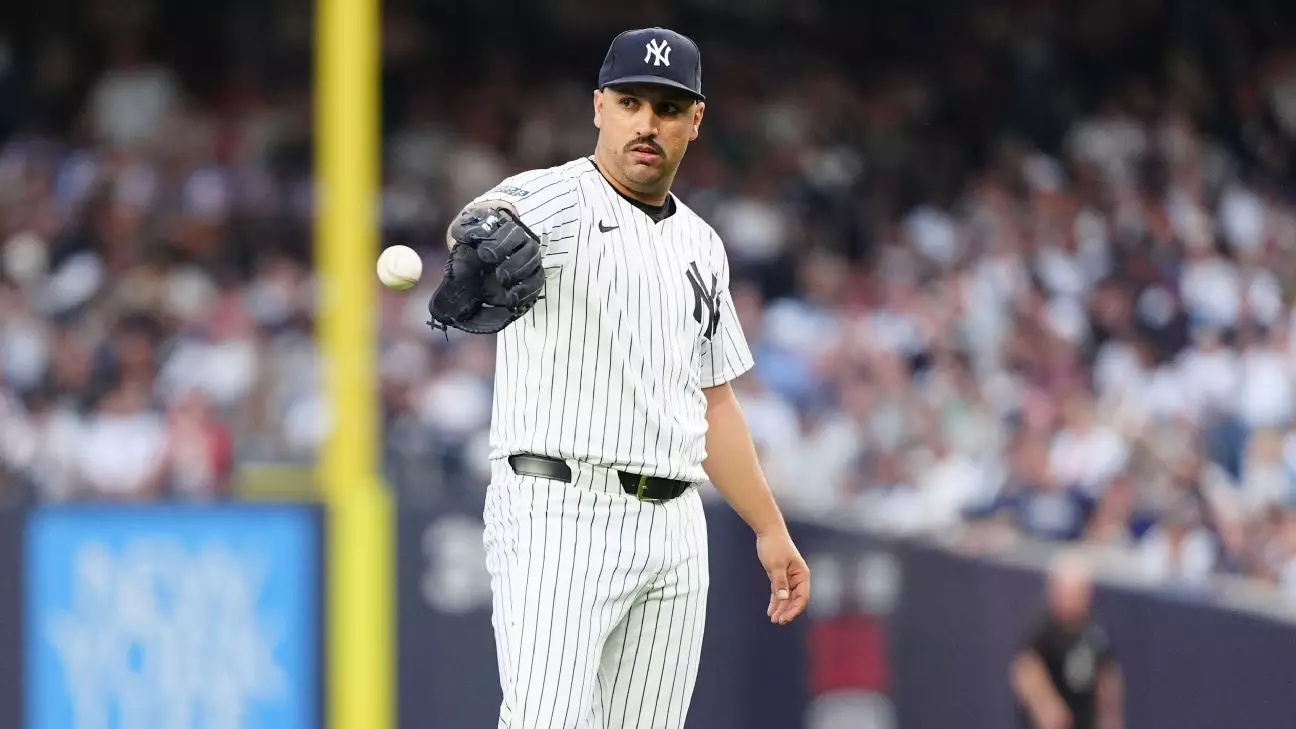In the world of professional sports, the cost of injury management often weighs heavily on athletes’ minds, especially when the stakes are as high as the World Series. Nestor Cortes, a promising pitcher for the New York Yankees, finds himself at a crossroads. Just a month removed from being diagnosed with a flexor strain—an injury that often signals more severe elbow issues—Cortes is contemplating a return to the mound during one of the most critical moments of his career. Although this decision carries significant implications for both his health and financial future, Cortes’s fierce desire to contribute to the Yankees’ championship aspirations overshadows the risks involved.
Cortes’s situation isn’t just about immediate performance; it’s a complex negotiation between personal ambition and long-term consequences. As a free agent following the next season, every pitch he throws not only affects his team’s championship chances but also dramatically influences his market value in the highly competitive landscape of Major League Baseball (MLB). An injury now could mean lost opportunities and diminished contracts in the future. Yet, the lure of potential glory—a championship ring—pulls him into a calculated risk that many athletes grapple with at some stage of their careers.
Despite being on the injured list, the prospect of returning to significant gameplay for the World Series began to take shape when the Yankees progressed through the playoffs. Cortes undertook a meticulous rehabilitation process, one that involved not throwing for ten days followed by a regimen that included a Platelet-Rich Plasma (PRP) injection. This cutting-edge treatment is often utilized to enhance recovery by promoting tissue regeneration. Following his recovery, Cortes was able to gradually increase his throwing distances, finally progressing to a live bullpen session—an essential step that could determine his readiness for the World Series.
This gradual build-up highlights the delicate balance between ensuring readiness and risking further injury. After tossing 28 pitches against actual hitters, Cortes seemed optimistic, drawing on adrenaline and past experience to convince himself he could make it work. His confidence resonates with a core aspect of sports culture: mental resilience. Athletes often draw on their histories of overcoming adversity to navigate challenging situations, and Cortes is no exception.
In the lead-up to the World Series, Yankees manager Aaron Boone’s comments indicated a careful consideration of the roster structure. With options to carry either 13 pitchers or 14 position players, the decisions made will profoundly affect not only the team’s initial strategy but also how they adapt throughout the series. The inclusion of Cortes would likely replace another pitcher, and given his role, this could shift the dynamics of the bullpen significantly.
The Yankees have demonstrated adaptability in their pitching strategy, particularly with left-handed relievers such as Tim Hill and Tim Mayza. However, adding an element like Cortes—who would bring not merely another arm but also unique skills and versatility—invites renewed excitement. Cortes’s past experiences of working various roles on the pitching staff could serve as a tactical advantage against formidable left-handed hitters in the opposing team lineup, including stars like Freddie Freeman and Shohei Ohtani, adding additional layers of complexity to game planning.
Ultimately, Nestor Cortes’s choice to risk his health for a shot at World Series glory encapsulates the ethos of professional sports: the intricate dance between personal sacrifice and the pursuit of greatness. While this gamble may very well earn him accolades and a coveted championship ring, it also poses the peril of long-term consequences that could shadow his future in baseball. With all eyes on him and the pull of history surrounding the World Series, Cortes’s journey will be closely watched—not just for the outcome of the games, but for the lessons they may impart about resilience, ambition, and the complex calculus of risk in the world of high-stakes sports.


Leave a Reply